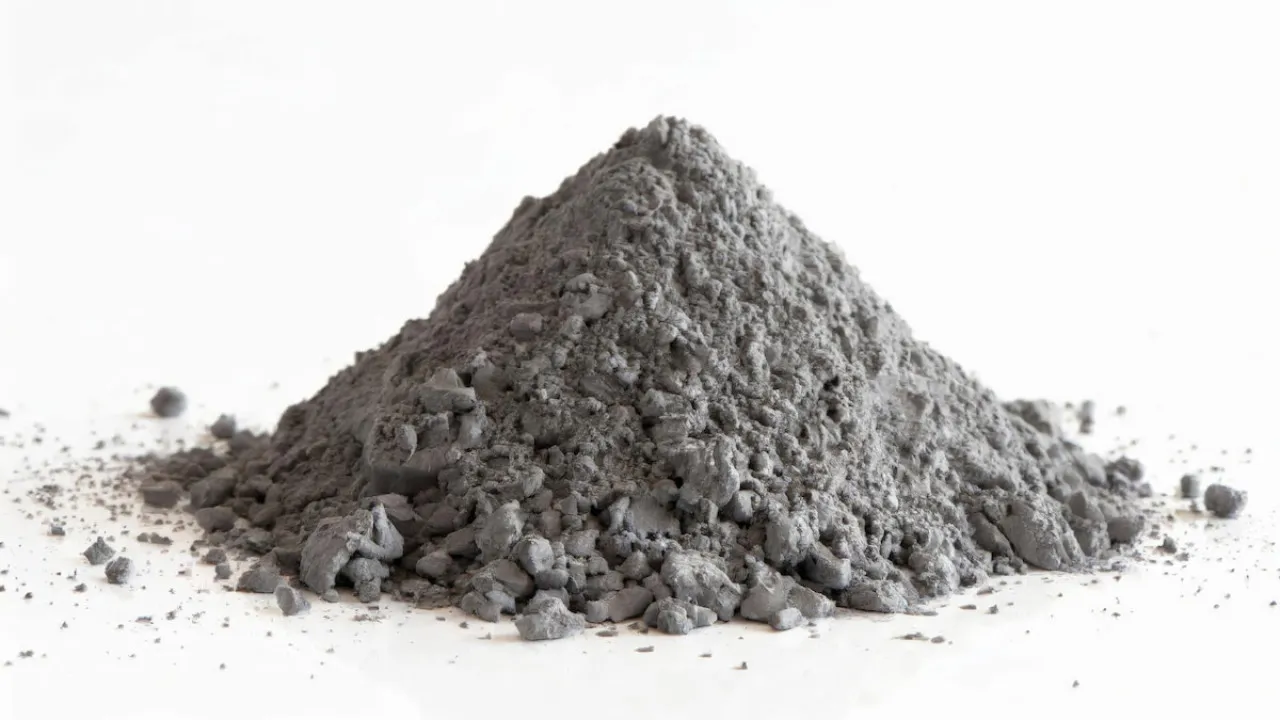In the modern construction industry, the need for stronger, more durable, and more efficient concrete continues to rise. One way to meet this need is by adding an additive material called silica fume to the concrete mix.
Silica fume is known as a high-silica pozzolanic material that comes from the product of silicon metal or ferrosilicon production. The use of this material is known to significantly increase compressive strength and durability, as well as reduce concrete porosity. Let's learn more about silica fume, from its definition and function to its production process, below!
What Is Silica Fume?
Micro silica or silica fume is a very fine powder that is a byproduct of ferrosilicon and silicon production. With particle sizes approximately 100 times smaller than regular cement particles, silica fume has a very high amorphous silica content, making it highly reactive when mixed with cement.
These silica fume particles, with a diameter of 0.1–1.0 micrometers, play an important role in influencing the chemical and mechanical properties of concrete. Geometrically, silica fume can fill the gaps between cement particles, thereby reducing the pore diameter and total pore volume in concrete.
Initially, lightweight concrete was often only used for non-structural walls because its strength was not as good as that of other types of concrete. However, it has recently been discovered that adding silica fume, which is also high in SiO2, to the concrete mix can significantly increase the strength of lightweight concrete.
This makes silica fume the best alternative for producing high-strength concrete. In addition to increasing strength, the use of silica fume also has the potential to save materials.
Silica fume can also replace some of the other materials in the concrete mixture, especially expensive cement, thus minimizing the cost of concrete production. Overall, the addition of silica fume to lightweight concrete mixes has been proven to increase compressive strength, split tensile strength, and flexural strength.
Therefore, silica fume can be an effective solution for producing strong and lightweight concrete. With increased strength and lower costs, silica fume-reinforced lightweight concrete is an ideal choice to support the distribution of infrastructure development.
Read also: Precast Concrete: Definition, Functions, and Types
The Function of Silica Fume in Concrete Construction
Silica fume is not only known as a micro-sized additive, but also plays an important role in improving the quality of concrete.
Its use provides various benefits that support the strength and durability of concrete in the long term. Here are some of the functions of silica fume in concrete.
1. Increased Durability
The addition of silica fume to concrete significantly increases its durability. Concrete becomes stronger in the face of freeze-thaw cycles and sulfate attacks, making it an excellent choice for use in extreme weather conditions.
2. Resistant to Water Penetration or Other Chemicals
With silica fume, concrete becomes denser as its pores shrink. This makes it highly resistant to water penetration and harmful chemicals. This benefit is important for structures that are often exposed to harsh environments, such as bridges or buildings near the sea.
3. Increases Concrete Compressive Strength
One of the main functions of silica fume is its ability to increase concrete compressive strength. When added to the mixture, silica fume reacts with calcium hydroxide from cement hydration. This reaction produces more calcium silicate hydrate (C-S-H), an important component that gives strength to concrete.
4. More Cost-Effective
As explained earlier, the use of silica fume also helps reduce the need for other materials, especially cement, which is quite expensive. This efficiency lowers the cost of concrete production.
Overall, the addition of silica fume has been proven to increase the compressive strength, splitting tensile strength, and flexural strength of lightweight concrete, making it an effective and economical solution to support the distribution of infrastructure development.
Read also: Concrete Rebate: Definition, Function, and Advantages
Production Process of Silica Fume
Silica fume is produced from the evaporation of silicon dioxide in a high-temperature electric furnace. When the gas containing SiO₂ comes out and in contact with air, rapid cooling occurs, forming amorphous particles shaped like fine glass balls.
These particles are then collected through a filtration system. The silica content in silica fume is very high, around 85–98%, with very small particle sizes, around 0.1–1.0 microns.
In concrete mixtures, silica fume is used to increase compressive strength and durability, especially in high-performance concrete, such as structural columns, shear walls, precast concrete, and prestressed concrete.
Generally, silica fume is added at 0–30% of the total mixture, accompanied by a superplasticizer so that the concrete stays easily workable even with low water content.
In addition to improving strength and durability, silica fume also fills cement pores, reduces pore diameter and volume, and strengthens the transition zone between aggregates and cement paste, resulting in a denser, stronger, and more durable concrete structure.
The Advantages of Silica Fume
The use of silica fume with superplasticizers in concrete mixtures offers many advantages. Some of these have higher compressive and tensile strength. In addition, the concrete also exhibits less creep and shrinkage, as well as low strain.
Besides that, concrete becomes more resistant to wear and chloride attack because of its low permeability. The lower the permeability of concrete, the more difficult it is for chemicals to penetrate and damage it, making concrete more durable in extreme environments.
Challenges in Using Silica Fume
Although silica fume has many benefits, there are several obstacles that need to be considered in its use, such as handling, occupational health risks, water entrainment problems, plastic shrinkage, and quality control.
Silica fume is very fine and easily airborne. Therefore, the handling processes, such as loading, transportation, storage, and mixing, must be carried out with extra care.
Additionally, from a health perspective, workers must be provided with respiratory protective equipment to prevent inhalation of fine silica fume particles, which can cause health risks.
This concludes the comprehensive explanation of silica fume, from its definition and function to its production process. The use of silica fume as an additional material has been proven to significantly improve concrete quality.
However, to achieve the best results, it is also important to choose the right type of cement, especially in the precast concrete industry, which requires high efficiency, precision, and consistent quality.
To that end, Semen Merah Putih offers a range of superior products, such as Semen Merah Putih ULTRAMIX-P, which is specially designed for high-quality precast concrete, Semen Merah Putih ULTRAMIX-G for general construction needs, and Semen Merah Putih ULTRAMIX-A, which is suitable for the lightweight brick industry.
There is also Semen Merah Putih FLEXIPLUS, which is certified as environmentally friendly, and SUPERMIX with optimal binding power and compressive strength. All of these superior products are the right solution to support an efficient and high-quality precast concrete production process.
With the support of modern factories and high-quality standards, Semen Merah Putih is ready to be your best partner in delivering strong and efficient construction. Contact us for more information and the best solutions for your construction project!
Read also: Ready Mix Concrete: Types, Grades, and How to Make It



